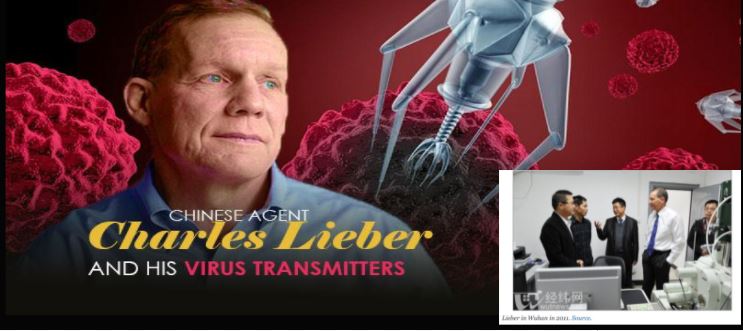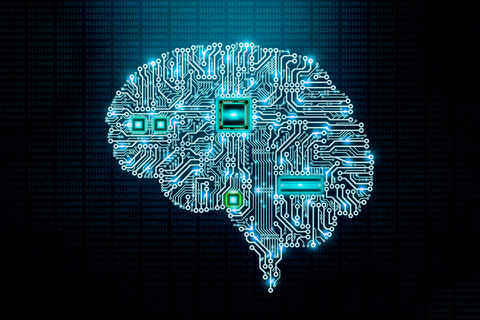Can you believe all of the information bubbling to the surface? Folks, buckle up. Things will continue to be exposed in our world, and no rugs will be left to sweep shit under. Those who follow astrology say we are in the age of Aquarius, and on the Dawn of Aquarius, let’s take a dive into the latest in the world of transhumanism.
First off, tectonic plates recently moved in the sky. In mid-November 2024, the transition of Pluto out of Capricorn and into Aquarius was monumental. It signifies a shift in collective energy that will affect societal structures, technology, and how individuals experience power and transformation. Pluto, the “planet” of life, death, rebirth, renewal, and transformation, will remain in Aquarius until 2043.
These are revolutionary times when AI and telepathy will concurrently exist. Think 5D telepathy mixed with surveillance up the wazoo.
The merging of man with machine will challenge our very notion of what it means to be human.
Will you insert a chip or be relegated to the Savage Lands?
And while the mainstream doesn’t quite get the big picture, transhumanism has been steadily creeping into our world like a stealthy predator on a mission. And don’t be fooled by the Golden Age of Trump.
To illustrate what I mean, I’d like to cite the Hope Experiment, a 1957 study by psychologist Dr. Curt Richter. In this experiment, rats were initially submerged in water and allowed to struggle for some time before being rescued.
When the rodents were placed back in the water after being saved, they could survive for much longer (around 60 hours) than the first time they were submerged. The study is often interpreted as showing the power of hope and the psychological impact of the belief that rescue or relief is possible. The rats’ ability to survive longer was attributed to the belief that they could be saved, demonstrating the potential strength of hope in overcoming adversity.
The next four years will be like that. The goal is 2030, the year of the Great Reset.
2030 is a convergence point for many reasons, and not just because of the UN or the WEF. Biblical, geophysical, astrological, and cosmological cycles converge in about five years. What we see in the world is not spontaneous but organized. Organized chaos.
An ancient battle has been playing out for a very long time between the Sons of Darkness and the Sons of Light (good and evil). And they have been waiting for eons for this age of Aquarius. I suspect the overlords knew these solar flares would hit the Earth and bring more light/truth to the surface. Veils are being lifted! Current solar flares are intensifying Earth’s energetic field, stirring profound collective and personal truths to rise to the surface. Their cosmic charge acts as a catalyst, unveiling hidden layers and prompting transformative clarity.
As of January 8, 2025, solar activity is moderate, with recent observations indicating multiple M-class and C-class solar flares. These solar flares can impact Earth’s ionosphere, potentially causing minor disruptions in high-frequency radio communications on the planet’s sunlit side.
We have an opportunity to raise our frequency and ascend. Arguably, taking a bioweapon masquerading as a vaccine that attacks the heart prevents that.
So, let’s look at what’s unfolding before our eyes, and trust me, this isn’t some dystopian science fiction. This is real.
 Musk and Neuralink: The Digital Frontier
Musk and Neuralink: The Digital Frontier
The technofascists are creating brain-machine interfaces and nanotechnology. Of course, Elon Musk plays a pivotal role in reshaping the future—whether we like it or not.
Let’s start with the man himself, Elon Musk, the genius inventor with a seemingly endless reservoir of ambition who’s now buddy-buddy with Trump and playing in the brain game with his company, Neuralink. Musk has already made waves with his plans to launch us into space and revolutionize electric cars, and now, he’s aiming to revolutionize the human brain. Forget about watching mind-bending sci-fi movies. Neuralink, as I’ve reported previously, has gotten FDA approval. How does this even happen?
Neuralink’s goal? To implant tiny, wireless chips into human brains – enabling you to control devices with nothing but your thoughts. No, really. This is no longer the stuff of dreams. Two people with spinal cord injuries have already been chipped. They can send messages, play games, and even control a cursor, all with their mind.
Speaking of dreams, the first-ever communication between people recently occurred. Scientists have brought science fiction closer to reality by achieving the first two-way communication between individuals during lucid dreaming.
Personally, many think these advances in human evolution are sold as beneficial, but before we start calling Musk a modern-day savior, let’s not get carried away. The ethics of brain augmentation are murky at best. Where do you draw the line? Musk has his vision for this brave new world, but let’s be honest — we’ll all need some serious answers before signing up for brain surgery like it’s a trip to the dentist.
Synchron’s Stentrode: Beating Neuralink at Its Own Game
Neuralink isn’t the only player in the game. Hardly. Enter Synchron – a neurotechnology company that’s quietly but effectively one-upping Musk. While Musk’s Neuralink is all about high-tech invasive procedures, Synchron has developed something far less invasive and, dare I say, potentially more practical.
Synchron’s brain implant, the stentrode, uses a small, stent-like device that fits into the brain’s blood vessels. There are no drills and no significant surgeries. It’s a little implant with electrodes that transmit brain signals to a computer via Bluetooth. The company is already helping people with Amyotrophic Lateral Sclerosis (ALS) and spinal cord injuries regain some autonomy by allowing them to control technology with their thoughts. In early January 2025, Team Gleason, a foundation “dedicated to improving people’s lives with ALS,” announced an expanded partnership focused on raising awareness of Synchron’s BCI Community. The collaboration highlights a shared commitment to both empower people living with paralysis and accelerate the development of innovative solutions.
Here’s the kicker: this isn’t some far-off technology. The first human trials are already happening. But, as with Neuralink, this technology raises questions. How do we balance the potential benefits with the inevitable ethical dilemmas? And who controls your mind once you’ve linked your brain to the internet? That’s a question worth asking, especially regarding privacy and security.
Nanotech: Tiny Machines with Big Potential
If you think your brain is the only thing getting a makeover, think again. Enter nanotechnology, the tiny machines capable of re-engineering biology at the cellular level. These minuscule devices are the perfect tool for transhumanists looking to enhance human capabilities. You know why? They’re invisible! So while they are nano-forming our entire planet, the mainstream is clueless!
Nano is a hidden force shaping our world. Since it’s on such a small scale, many people are unaware of how it’s influencing various aspects of our environment, health, and daily life. It’s like the unseen hand. altering things at a level that doesn’t immediately register in the larger picture.
Because it’s all hard to see, you can imagine how difficult it is for people to grasp just how much these innovations are impacting the planet – both positively and negatively.
The technofascists are silently weaving a new synthetic fabric for our planet, and only those who look closely or stay informed can start to see the threads.
Here are just some of the ways we’re nano-forming:
Nanotechnology in Environmental Remediation: Nanomaterials are used to clean up air, water, and soil pollutants. Nanoparticles such as activated carbon and iron oxide can help break down toxic chemicals in contaminated environments, including heavy metals and organic pollutants.
Self-Cleaning Surfaces: Some materials, such as self-cleaning glass or building coatings, have nano-engineered surfaces that repel dirt and water. These technologies are said to reduce the need for chemical cleaning agents and lower overall environmental pollution.
Solar Panels and Energy Harvesting: Nanomaterials are used to develop more efficient solar panels, like quantum dots and nanowires, which could change how we harness solar energy. This technology is being sold with the promise of creating a cleaner energy grid, reducing reliance on fossil fuels.
Pollution-absorbing Nanomaterials: Nanomaterials are designed to absorb carbon dioxide and other greenhouse gases. Carbon nanotubes, for example, have been explored for capturing CO2 from the atmosphere, which could help mitigate climate change by reducing carbon emissions.
Agricultural Enhancements: Nanoscale fertilizers and pesticides are being developed to increase crop yield while reducing environmental impact. Nano-fertilizers release nutrients more efficiently, minimizing waste, and nano-pesticides can target specific pests, reducing the need for harmful chemicals.
Water Purification: Nanotechnology is being used to develop highly efficient water filtration systems. For instance, nanoparticle filters can remove heavy metals, bacteria, and viruses from drinking water, offering solutions for clean water access in many parts of the world.
Smart Textiles and Waste Reduction: Nano-enhanced fabrics can improve durability, water resistance, and stain resistance, extending the lifespan of clothes and reducing waste. Additionally, innovations in waste management using nanotechnology can reduce landfill accumulation.
Carbon Nanotubes in Construction: Carbon nanotubes can be used in construction materials to strengthen buildings while potentially reducing material usage. This could lower the construction industry’s carbon footprint.
Energy Storage: Nanotechnology is playing a role in developing next-generation batteries and energy storage systems. Nanomaterials are being used to create more efficient batteries that store more energy, which could help support renewable energy sources and electric vehicles, contributing to cleaner energy solutions.
Charles Lieber: The Scientist Who Got Away
Let’s shift gears and talk about Charles Lieber, the former Harvard chemistry professor who was arrested as an alleged spy but was released with a tap on the wrist. Lieber was convicted of lying to federal authorities about his involvement with China’s Thousand Talents Program, which aims to recruit global scientists and researchers for high-tech projects. Lieber had also failed to report his financial dealings with Wuhan University of Technology. For those of you following along, this is the very same Wuhan linked to the initial outbreak of the COVID-19 plandemic.

Lieber was sentenced to two days served in prison by a judge who graduated from Harvard and a fine for his role in this mess. But what’s interesting here isn’t just the scandal; it’s what Lieber’s case represents in the context of transhumanism.
I call him the NanoTech King, and only a handful of people have covered his role. I’ve written quite a bit about him in the last couple of years. Read my articles here. Lieber holds 66 patents related to his work in nanotechnology and materials science. His research has been groundbreaking, particularly in developing nanowires and nanomaterials and their applications in electronics, sensors, and biomedical devices. These patents reflect his contributions to advancing nanoscience, particularly in electronics and bioelectronics.
How much of this research should be conducted privately as the world races to develop technologies that blur the lines between humans and machines? Who benefits when groundbreaking technology falls into the hands of governments and corporations?
Lieber’s case is a cautionary tale that sheds light on the darker side of scientific “progress.” Following his conviction, Lieber retired from his position. In October 2024, a federal judge approved his request to visit China for employment networking and to deliver a lecture in Beijing.
In The Singularity Is Near, Ray Kurzweil discusses the potential of nanotechnology to enhance and even replace biological functions at the cellular level. He envisions the development of “nanobots – robots designed at the molecular scale – that could operate within the human body to perform various tasks
Lieber recently co-authored a study where devices would combine the properties of nanomaterials (such as their small size and unique electrical characteristics) with the ability to manipulate fluids at the nanoscale.
Wow, I can’t imagine what this is going to be used for. Kurzweil mentions “respirocytes,” which are mechanical red blood cells capable of efficiently transporting oxygen throughout the body. He suggests that replacing a portion of our natural red blood cells with these respirocytes could enable humans to hold their breath for extended periods or enhance physical endurance.
The Future of Humanity || Technology Run Amok?
Let’s not sugarcoat the rapid development of transhumanist technologies, which is exciting and terrifying. However, the impact of these technologies on our species is not being fully acknowledged.
Elon Musk’s Neuralink, Synchron’s stentrode, and the rise of nanotechnology are all pieces of a larger puzzle being rapidly put together. But as we race toward a future where machines and humans are inseparable, we must ask ourselves: Who controls the technology? And more importantly, who controls us?
I would say it’s a battle for our souls, and the stakes are so incredibly high it’s close to impossible to convey in words.
++++++++++++++++++++++++++++++++++++++++++++++++++++++++++++++++++++
 Like what you’re reading on The Tenpenny Report? Share this article with your friends. Help us grow.
Like what you’re reading on The Tenpenny Report? Share this article with your friends. Help us grow.
Get more of Dr. Tenpenny’s voice of reason at her website.
Join our list here
Make a donation here (and thank you!)
++++++++++++++++++++++++++++++++++++++++++++++++++++++++++++++++++++
Maryam Henein is an investigative journalist, and founder, and editor-in-chief of the health magazine and marketplace HoneyColony. Read her Substack here. She is also a functional medicine consultant/coach, and the director of the award-winning documentary film Vanishing of the Bees, narrated by Elliot Page. Follow her on Twitter @maryamhenein. Email her: maryam@honeycolony.com.

